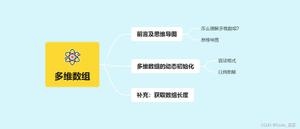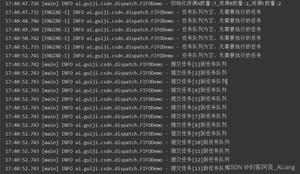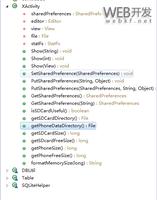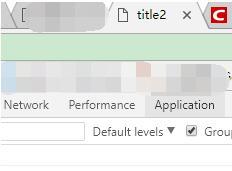Activity 创建过程(子线程更新 UI 真的可以吗)
来看个都遇到过的 Error
相信大家都遇到过这种 Exception 吧
android.view.ViewRootImpl$CalledFromWrongThreadException: Only the original thread that created a view hierarchy can touch its views.
只有主线程能更新 UI,但是子线程真的不能更新 UI 吗?我们来看以下代码
片段一: onCreate 中开启子线程来更新 UI
public class StartActivity extends AppCompatActivity { private TextView tvName;
@Override
protected void onCreate(@Nullable Bundle savedInstanceState) {
super.onCreate(savedInstanceState);
setContentView(R.layout.activity_start);
tvName = findViewById(R.id.tv_name);
new Thread(() -> {
tvName.setText("Hello, WhenSun!");
}).start();
}
}
很简单的代码,绑定控件之后直接在子线程更新TextView显示的内容为 Hello, WhenSun!,来猜下是否能运行呢?
你这是在写啥,开始已经说了啊,只能在主线程更新 UI,而现在在子线程运行的,肯定报错啊。真的是这样吗?我们来看运行结果
卧槽? 我看到了什么,它竟然运行成功了,不仅没有报错,还进行绘制了。说好的子线程不能更新 UI 呢?是不是很震惊,那接下来就来解答你的疑惑。
我们都知道 Activity 的生命周期是从 onCreate 开始的,但是在 onCreate 之前做了什么,你有没有考虑过呢,
1. 从 performLaunchActivity 开始
Activity 创建的最后一步就是执行 performLaunchActivity 方法,那么我们就从这里开始往下走。
private Activity performLaunchActivity(ActivityClientRecord r, Intent customIntent) { Activity activity = null;
// 创建 Activity 实例
java.lang.ClassLoader cl = appContext.getClassLoader();
activity = mInstrumentation.newActivity(
cl, component.getClassName(), r.intent);
// 调用 Activity 的 attach
activity.attach(appContext, this, getInstrumentation(), r.token,
r.ident, app, r.intent, r.activityInfo, title, r.parent,
r.embeddedID, r.lastNonConfigurationInstances, config,
r.referrer, r.voiceInteractor, window, r.configCallback,
r.assistToken);
return activity;
}
这次我尽量简化代码,只写主要部分,我们可以看到首先创建了一个 Activity 的实例,然后会执行 attach 方法,相信大家对attach 方法应该很数据吧,在fragment中获取context的时候,就是用的它。但是不要以为只有fragment 有 attach,咱们的 Activity也有 attach 哦。那么 attach 到底做了什么呢?
final void attach(Context context, ActivityThread aThread, Instrumentation instr, IBinder token, int ident,
Application application, Intent intent, ActivityInfo info,
CharSequence title, Activity parent, String id,
NonConfigurationInstances lastNonConfigurationInstances,
Configuration config, String referrer, IVoiceInteractor voiceInteractor,
Window window, ActivityConfigCallback activityConfigCallback,
IBinder assistToken) {
attachBaseContext(context);
mWindow = new PhoneWindow(this, window, activityConfigCallback);
mWindow.setWindowManager(
(WindowManager)context.getSystemService(Context.WINDOW_SERVICE),
mToken, mComponent.flattenToString(),
(info.flags & ActivityInfo.FLAG_HARDWARE_ACCELERATED) != 0);
}
其实 attach 主要干了两件事,创建了 PhoneWindow,并且将 PhoneWindow 和 WindowManager 进行了绑定,获取到了 Window 的服务进程。那么这个 PhoneWindow 又是什么呢?我们来看一张图,了解下咱们写的布局的结构。
其实所有的
layout都是绘制在ContentView中的,而上层已经为咱们设计好了。
Window、Activity、View关系或许你会说,什么?他们三还有关系?不就是你上图标出来的那样吗,层级包含关系咯。其实不然,我们知道
Activity是咱们的活动,而View是一个一个的小单元,就是咱们的控件,他们俩结合起来总感觉缺点什么,很难将它们俩连接起来,因此就出现了Window,它就是一个连接作用,一个缓冲,其实根本没什么卵用。
说了那么多,回到我们的正题,在 attach 中创建了 PhoneWindow 并获取到 Window 的服务进程之后,这样 Activity 就做好管理界面的准备了。 接下来我们回到 performLaunchActivity 继续看咱们剩下的逻辑了
private Activity performLaunchActivity(ActivityClientRecord r, Intent customIntent) { if (r.isPersistable()) {
mInstrumentation.callActivityOnCreate(activity, r.state, r.persistentState);
} else {
mInstrumentation.callActivityOnCreate(activity, r.state);
}
return activity;
}
那么 callActivityOnCreate 中又做了什么呢
/** * Perform calling of an activity's {@link Activity#onCreate}
* method. The default implementation simply calls through to that method.
*
* @param activity The activity being created.
* @param icicle The previously frozen state (or null) to pass through to onCreate().
*/
public void callActivityOnCreate(Activity activity, Bundle icicle) {
prePerformCreate(activity);
activity.performCreate(icicle);
postPerformCreate(activity);
}
Perform calling of an activity's {@link Activity#onCreate},看这里,调用了Activity的onCreate方法,从这里开始就进入咱们熟悉的生命周期了
以上是 Activity 创建过程(子线程更新 UI 真的可以吗) 的全部内容, 来源链接: utcz.com/z/267633.html








